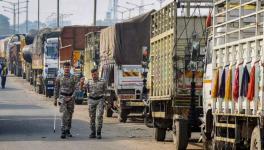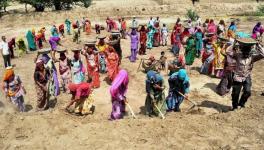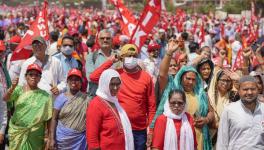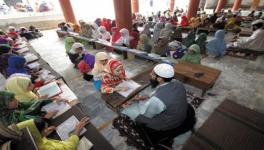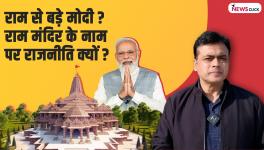What’s Wrong with India’s Economy and How to Fix it
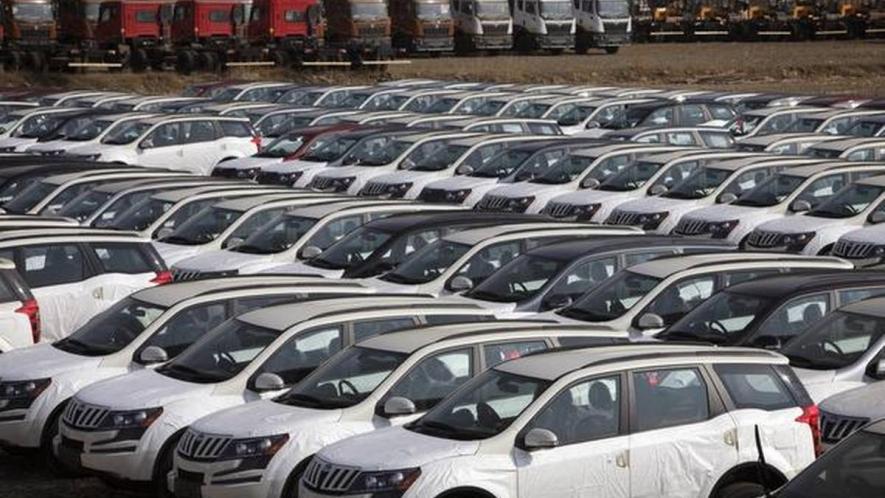
The economy has grown at around 5% in the last quarter of this financial year and projections for the next three quarters are bleak. The Sensex was 800 points down on September 4, and NIFTY declined 2% in its worst fall of 2019. Some eight core sectors, including power and steel, posted 2.1% growth in the last quarter. A slowdown was evident over the last six quarters but not acknowledged so far, considering a general election was held just three months ago.
News reports spell doomsday approaching from various fronts: The State Bank of India, the top public sector banker, is mulling over banning or restricting the use of ATM cards and switching to an application for cash withdrawal. This would heavily restrict cash availability as only one out of three Indians have smartphones that can handle mobile apps.
In the corporate sector, Reliance’s Jio venture has a Rs 1.5 lakh crore loan due to banks and Airtel, Rs 1 lakh crore. Even the interest on provident funds used by the government have not been paid. Nearly 5,000 linesmen of the public-sector telecom company, BSNL, have not been paid their salaries for six months. Nearly 13 lakh apartments stand unsold in the 30 top cities. Maruti Suzuki in the National Capital Region and Tata Motors at Jamshedpur have announced their plants will remain closed for a while. Vehicles worth Rs 56,000 crore are unsold across India. Auto showrooms have closed shutters and owners are telling banks that they cannot repay loans for now.
A Truckers Association has noted a 50% depletion in the commercial vehicle fleet, which means nearly 13 lakh people will become unemployed. White goods manufacturer, Videocon, is closed and digital data storage provider Moser Baer’s owner is in jail for he has been unable to service the company’s loans. Textile mill owners have advertised that the recession in their sector has left them inability to pay vendors or banks.
Six lakh Army men deputed to the Kashmir Valley is an extraordinary situation in this context. It is a huge drain on India’s resources. Restaurants, hotels, even the sale of soaps and biscuits have sharply declined. Thereby, the government will get lower revenues from the Goods and Services Tax or GST, which has in any case never been able to meet the targets of tax collection in the last two years.
The government is now talking about selling some assets, but buyers are hard to find. Air India’s sell-off has been attempted thrice, but there’s no sign of closure. As a sort of final resort, the government has withdrawn Rs1.76 lakh crore ($24 billion) from the central banker, Reserve Bank of India. It has not stated why the highest amount ever by any government is being appropriated from a central bank. Never in history has there been such a large withdrawal from a central bank. The closest instance is of $19 billion taken in the United States for its transportation overhaul. The non-performing assets or NPAs with the banks—a 90% share of which is with the public sector banks—now stand at Rs 9 lakh crore.
Well-known economist, Arun Kumar, a former professor at the Jawaharlal Nehru University, has argued recently that India’s actual growth is close to 0% and has been so for a few quarters. The reason he gives is that the government did not recognise the crisis in the unorganised sector after demonetisation, nor did it accept massive job losses that have followed ever since. Delayed recognition of the slow-down and bad decisions, such as the surcharge on foreign investment announced in the last Budget (though it was reversed after an uproar), have worsened an already bad situation.
Now, the organised sector is reeling under the effects of a slowing economy; while the unorganised sector had been suffering for long. This slowing down has the most severe impact on the informal economy and daily-wage earners.
The slowdown could even turn into a recession if the GDP (gross domestic product) continues to dwindle for another three consecutive quarters. Economists had criticised the thoughtless decision taken in November 2016 to put Rs 500 and Rs 1,000 currency notes out of circulation overnight. This amounted to declaring 86% of India's currency as illegal. Thereafter, the messy implementation of the GST brought in a five-layered central taxation. The slogan of the government was ‘One Nation One Tax’, but the grand idea had to be revised and even then what resulted is the current mess in the economy.
Cash has gone out of the hands of people and business establishments and resulted in a virtual demise of the informal sector. This sector accounts for more than half India’s GDP and it’s impossible to comprehend the overall economic decline without taking the decline of this segment into account.
Though intermittently, several times in the past one decade, India was among the fastest-growing economies. Now the economy lags China, Indonesia, Sri Lanka, Nepal and Bangladesh in growth rates.
The Way Ahead
Notwithstanding the decline in GDP growth from 8% in March 2018 to 5% in June 2019, the government is grandstanding. It has stated a goal to make the $2.7 trillion Indian economy a $5 trillion one by 2024. That is, it is pushing the notion that India will grow at 10%—double the growth rate of the last quarter. By contrast, consider the per capita GDP for India with other countries; which gives a fuller picture of the conditions of its people. India is at around $2,100 per capita income while Indonesia is at $3,900, China at $9,800, South Korea at $ 31,000 and the United States at $62,600.
One defensive refrain we hear is that the global economy is in recession given the US-China trade war. That there is tension in the Gulf region, in Hong Kong, and that Brexit-driven uncertainties are driving growth sentiment lower in Europe. That may well be true, but the recession that is being talked about has not hit yet. What we hear from the global economy are signs of a slowdown.
India has already posted a 3% decline in GDP over just 15 months. Besides, around 68% of India’s GDP is domestic against 39% of Chinese GDP. Hence, India is far more insulated from global economic influences compared with China; which is now growing at 6.6%. Worse, India’s growth, though muted, is a jobless growth with a 45-year high in unemployment recorded in 2018.
The Reserve Bank’s diagnosis is that this slowdown is cyclical. Hence it has cut interest rates four times since January, with the hope to pump liquidity into the system. The number of cuts itself shows that the market is responding as expected. The RBI has asked for structural reforms in the economy for higher ease of doing business.
The response of the government so far has been to withdraw RBI’s reserves, merge government banks, provide some tax breaks (especially on car purchases), ease foreign investment norms by abolishing the new surcharge, give depreciation allowances and so on. Most of these reliefs are for mid-term to long-term—their results will be reaped by the economy after six to eight quarters.
What is required is relief that has an effect on the next two quarters. This brings us to the demand side of the economy—considering the glut in the market, this is not a supply issue. To boost demand, particularly in the festive season in the next quarter, people need money through bonuses, cash schemes based on means, more than 100 days jobs a year under the rural job guarantee scheme MGNREGA and other measures. Currently, the average number of days of guaranteed employment under the scheme is 45 days, far less than the legal mandate). There is also a need for dearness allowances, tax rebates to small and medium enterprises, making filing of GST at the lower levels easier, loan waivers for poor farmers, price protection and higher government off-take of farm produce. These will give the extremely poor and the middle class more cash and boost demand.
Fact, figures and reports often conceal from our sight the jobless youth who wait at crossroads for a chance to earn a daily living. The marginal farmer and his produce similarly need a buyer. The truck drivers laid off, the domestic workers struggling as their employers’ real income decline need support today. The wheels of the economy run on their shoulders, therefore, big-ticket projects can wait; those hungry for work at home cannot. No amount of camouflaging of these issues by raising Pakistan and communal rhetoric can bring back the rice and roti that is shrinking on their plates.
Ujjwal K Chowdhury is a columnist and pro-vice chancellor of Kolkata-based Adamas University. The views are personal.
Get the latest reports & analysis with people's perspective on Protests, movements & deep analytical videos, discussions of the current affairs in your Telegram app. Subscribe to NewsClick's Telegram channel & get Real-Time updates on stories, as they get published on our website.











